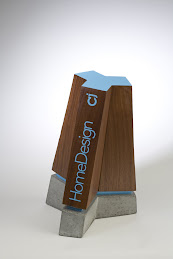Here are the finishing steps and the current progress;
1. Strip the forms
2. Thick slurry coat to fill the large bug holes
3. Quick grind 50 grit through 200 grit (about 30 minutes)
4. Light slurry coat
5. Quick grind quick grind 200 grit through 400 grit (about 30 minutes)
6. Spot slurry as places that are still low
7. Finish grind at 400 grit (about 30 minutes)
8. Seal and wax
9. Lightly rub with steel wool to remove the shine
 Really this project hasn't taken much time or money. The mold only took a few hours to build and get in place. The concrete was 6 bags of quikcrete at $4.50 each, 3 gallons of latex at $10 each, $10 worth of pigment, and about $10 for reinforcing steel. The concrete placement only took about 4 hours from buying the materials to setting up, placing, and clean up. The real cost was the dry grinding setup since most people are against wet grinding in their living rooms. Although if you are planning on two or more project, the speed and cleanliness of the dry setup is well worth the money.
Really this project hasn't taken much time or money. The mold only took a few hours to build and get in place. The concrete was 6 bags of quikcrete at $4.50 each, 3 gallons of latex at $10 each, $10 worth of pigment, and about $10 for reinforcing steel. The concrete placement only took about 4 hours from buying the materials to setting up, placing, and clean up. The real cost was the dry grinding setup since most people are against wet grinding in their living rooms. Although if you are planning on two or more project, the speed and cleanliness of the dry setup is well worth the money.













 The tile was held on with a combination of mortar and construction adhesive. Either way the underlying material is very rough and will create a great bond with the new concrete.
The tile was held on with a combination of mortar and construction adhesive. Either way the underlying material is very rough and will create a great bond with the new concrete.
 The new concrete will be about 1 1/2" out from the original. Because of the small clearance the concrete will have a maximum aggregate size of 3/8" to allow placement.
The new concrete will be about 1 1/2" out from the original. Because of the small clearance the concrete will have a maximum aggregate size of 3/8" to allow placement. Since the floor is concrete and I did not want to drill into the slab, the mold has feet out from the front and back. Silicone adhesive was used to seal the mold to the concrete and glue it into place. It will be fine as long as the concrete is not vibrated too much during placement. In order to accomplish this, the concrete for this placement will be self consolidating.
Since the floor is concrete and I did not want to drill into the slab, the mold has feet out from the front and back. Silicone adhesive was used to seal the mold to the concrete and glue it into place. It will be fine as long as the concrete is not vibrated too much during placement. In order to accomplish this, the concrete for this placement will be self consolidating. Due to the upcoming volume of pieces that will be created this summer I have started modifying a
Due to the upcoming volume of pieces that will be created this summer I have started modifying a 

